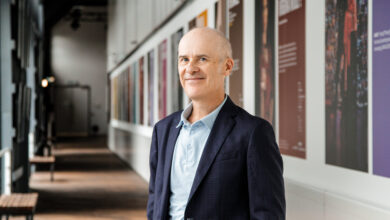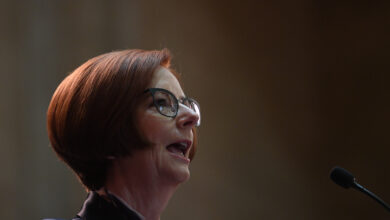Aged care seeks sustainable funding solutions in White Paper submission

The submission process for the comprehensive White Paper is in full swing as Australia seeks to address the financial challenges plaguing its aged care system.
Over 63 per cent of aged care providers are operating at a loss, highlighting the urgency of finding sustainable funding solutions.
The Aged and Community Care Providers Association (ACCPA) recently took the initiative to draft a white paper that will advise the Albanese Government on funding aged care for the next three decades.
The document will incorporate input from sector stakeholders, including older Australians, unions, finance providers, and academics, and is to be submitted within the coming months.
ACCPA chief Tom Symondson said the white paper could be a significant step towards addressing the sector's financial challenges.
"It's time to have an honest conversation about how Australia bridges the gap between our current system and those of comparable countries," Mr Symondson said.
"The majority of aged care funding in Australia comes from taxpayers, rather than individuals, placing an increasing burden on the federal government budget."
Australia's expenditure on aged care stands at 1.2 per cent of GDP, falling below the average of 2.5 per cent of GDP spending by other high-income nations.
The GDP, or Gross Domestic Product, measures the total value of goods and services produced within a nation's borders over a specific period.
Nevertheless, aged care ranks among Australia's top five budget expenditures, alongside the health system, National Disability Insurance Scheme (NDIS), and defence.
During 2021-22, government spending on aged care services was 27 per cent higher than in 2017-18 – consistent annual spending growth over the five years.
Despite the government allocating over $25.1bn to aged care, there's a growing burden on the federal budget, as most funding comes from taxpayers.
Mr Symondson said greater co-contributions and taxpayer levies were sustainable funding solutions.
"We must not lower our expectations and accept that Australia will have an aged care system with standards well below comparable countries," he said.
Sector stakeholders have repeatedly called for greater co-contributions and taxpayer levies, but the government has been reluctant to consider these as viable options.
The Aged Care Financing Authority (ACFA) stated in 2020 that a sustainable aged care system could be achieved by raising co-contributions from older Australians who had the means to do so.
"The Government's response to the Royal Commission's Final Report brought positive reforms for older Australians, including increased funding and improved care," the ACFA report read.
"But these reforms come at a considerable cost.
"Without reform of consumer funding contributions, the government and therefore future taxpayers will face significant sustainability concerns."
Aged Care Minister Anika Wells recently announced the department would explore a taxpayer levy to address the ageing population's needs.
In line with this, the Health Services Union (HSU) told The Australian today it would push for a 0.65 per cent aged care levy at the Australian Labor Party National Conference.
HSU chief Gerard Hayes said implementing the additional levy could generate over $20bn for the aged care sector in four years.
Commissioner Lynel Briggs also proposed a flat-rate levy at 1 per cent of taxable personal income in 2021, suggesting that it should be modelled after the existing Medicare Levy Act.
"ACCPA will attempt to answer many of these questions in its White Paper on the financial sustainability of Australia's aged care system," Mr Symondson said.
He said the Australian Government was currently reviewing 'funding arrangements for aged care', including the possibility of older Australians contributing more towards their care.
"The Aged Care Taskforce is working on recommendations for these changes, which will be announced later this year."
ACCPA recently hosted the Financial Sustainability Summit, where fifty experts gathered to discuss modernising aged care funding and enhancing its financial sustainability.
Most of Australia's aged care consumers contribute to their costs depending on their financial circumstances to ensure it is affordable for them.
For example, everyone entering residential aged care pays the basic daily fee of $58.98 per day, which is around 85 per cent of the standard full aged pension.
Then, consumers also may pay a means-tested fee and accommodation fee depending on their income and assets.
In 2020-21, residents' contributions accounted for 27 per cent of total revenue in residential care, similar to figures since 2016-17.
In the same period, home care package recipients contributed 2.2 per cent of home care provider revenue and home support service users 8.5 per cent of total expenditure.
"It's an inescapable fact that financial demands on the aged care system will grow over the next 10-20 years," Mr Symondson said.
"Pressure on the aged care sector will only intensify with a rapidly ageing population."
More than 4.1 million Australians are aged 65 and above, comprising nearly 16 per cent of the total population.
Projections indicate that in 2057 this figure will surge to 8.8 million people, representing 22 per cent of the population.
By 2097, one in four Australians will be aged 65 and above, reaching a substantial count of 12.8 million people.
Meanwhile, older Australians hold a significant share of the nation's wealth, with the average household net worth surpassing $1m.
At the same time, the majority pass away with the bulk of their retirement wealth untouched.
Australian aged care software provider CompliSpace chief David Griffiths said the aged care funding crisis was reaching 'its tipping point.'
"There are limits to how much taxpayers can provide to support older Australians who can fund their care," Mr Griffiths said.
"Co-contribution models are a way to make that possible and save aged care from becoming an unsustainable industry that fails older Australians."
Email: [email protected]





